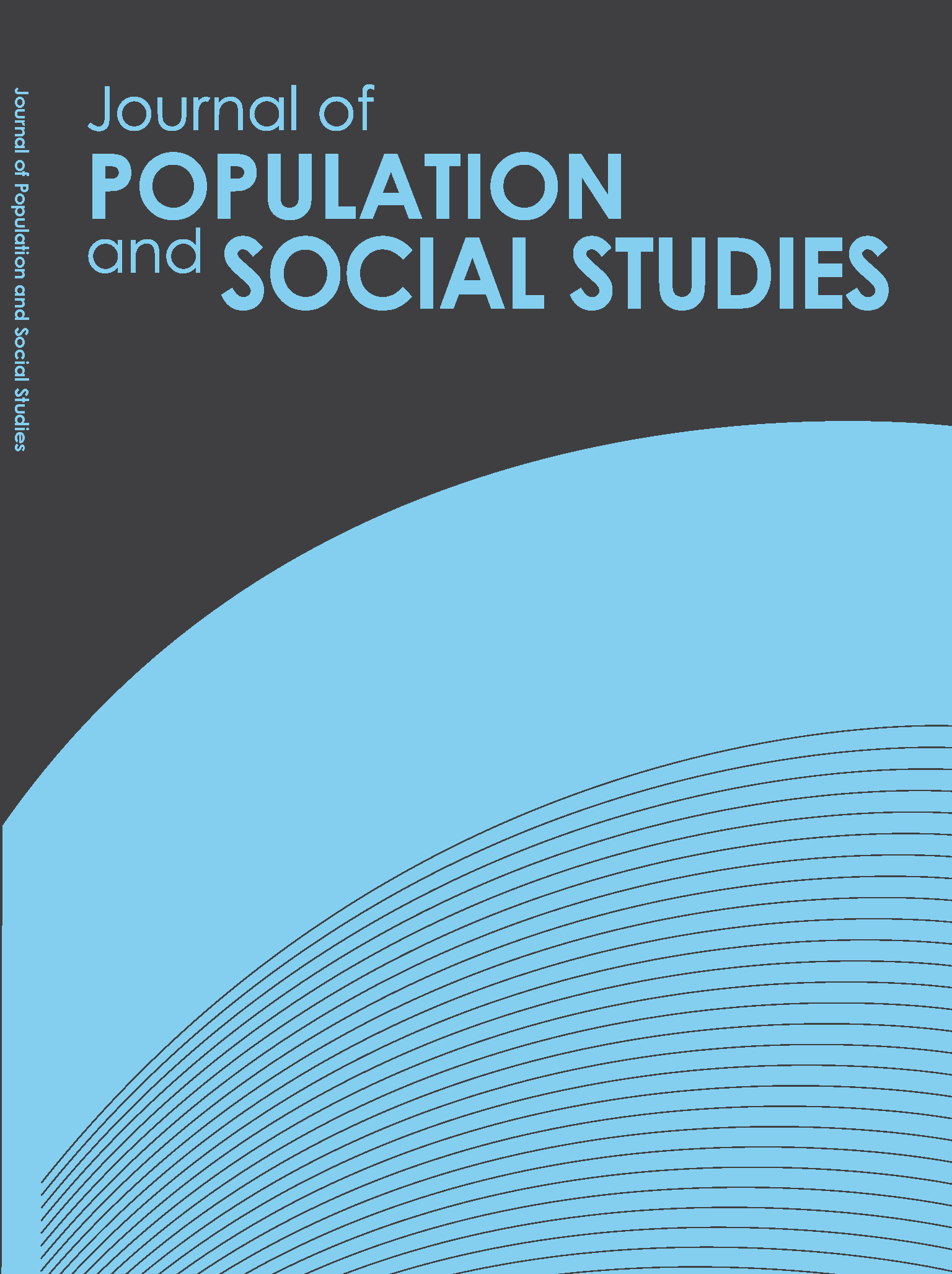The Experiences of Mothers Living with Autistic Children: A Qualitative Descriptive Phenomenological Approach
Main Article Content
Abstract
This study adopts a qualitative descriptive phenomenological approach to explore, analyze and document the experiences of mothers raising and living with autistic children. In doing so, the study recruited seven mothers of autistic children in Myanmar using a non-probability, purposive sampling method. Data was obtained through in-depth interviews and focus group discussion, and it was analyzed using Giorgi’s method. Six major themes emerged: loss of parental hopes and childhood significances, initial recognition and diagnosis, misunderstanding and assumptions about autism, mixtures of emotions experienced by the mothers, challenges in nurturing autistic children, and the mothers’ expectations about the future of their children. Raising and caring for an autistic child was challenging for the mothers as their children required constant care round the clock and for the entire span of their lives. Therefore, a comprehensive training in nursing is vital for these mothers. The findings of the study contribute to the literature on autism and forms as a basis for future research on this topic, especially on how living with an autistic child can have an effect on their siblings and other caregivers of autistic children using different approaches.
Article Details
References
• Autism and Developmental Disabilities Monitoring (ADDM) Network. (2012). Data and statistics of autism: Identified prevalence of autism spectrum disorders. Retrieved May 10, 2014 from: http://www.cdc.gov/ncbddd/ autism/doc./addm- 2012- community-report.pdf.
• Altiere, M.J., & von Kluge, S. (2009). Family functioning and coping behaviors in parents of children with autism. Journal of Child and Family Studies, 18, 83-92.
• American Psychiatric Association. (2000). Diagnostic and Statistical Manual of Mental Disorders-IV-TR (4th ed). Washington, DC: American Psychiatric Association.
• Aye-Nandar-Han. (2011). The lived experiences of mothers with deaf children. Unpublished Master of Nursing Sciences Dissertation. Yangon: University of Nursing.
• Barbera, M.L. (2007). The experiences of autism mothers who become behaviour analysts: A qualitative study. Retrieved May 10, 2014 from http:// barberabehavior consulting.com/articles/mom.bcba.pdf.
• Bawi, S.V. (2012). Understanding the challenges of disability in Myanmar. Unpublished Master of Arts in International Development Studies Dissertation. Thailand: Chulalongkorn University.
• Bright Tots. (2015a). Information on childhood developmental disorders: Treatment of autism. Retrieved July 29, 2015 from http://www.brighttots.com/treatment.autism.html.
• Bright Tots. (2015b). Information on childhood developmental disorders: Challenges to family. Retrieved July 29, 2015 from http://www.brighttots.com/challanges. family.html.
• Croen, L.A., Najjar, D.V., Fireman, B. & Grether, J.K. (2007). Maternal and paternal age and risk of autism spectrum disorders. Journal of Arch Paediatric to adolescent Medicine, 161 (April), 334-340.
• Fleishmann, A. (2005). The hero's story and autism: grounded theory study of websites for parents of children with autism. Autism: the International Journal of Research and Practice, 9(3), 299-316.
• Giarelli, E. (2013). Nursing care of people with autism spectrum disorder: Call for evidence-based research and practice. Retrieved May 10, 2014 from http://www.autismcincy.org/wp-content/uploads/2011/09/Autism-Prevalence-Presentation- 08.05.11.pdf.
• World Health Organization (WHO). (2013). Comprehensive and coordinated efforts for the management of autism spectrum disorders. Report of executive board. Retrieved May 11, 2014 from http://apps.who.int/gb/ebwha/pdf.files/EB133/B133.4-en.pdf.
• Guttovz, H.B. (2008). Caring for the child with autism. LPN 2008. Retrieved May 10, 2014 from http://www.researchgate.net/publication/4514743/Caringforthechildwithan autism/pdf.
• Leerkes, E.M. & Burney, R.V. (2007). The development of parenting efficacy among new mothers and fathers. Infancy, 12(1), 45-67.
• Lwe-Say-Paw-Hla. (2005). The lived experiences of mothers with mentally retarded children. Unpublished Master of Nursing Sciences Dissertation. Yangon: University of Nursing.
• Mugno, D., Ruta, L., D'Arrigo, V., & Mazzone, L. (2007). Impairment of quality of life in parents of children and adolescents with pervasive developmental disorder. Journal of Health & Quality of Life Outcomes, 5, 22-29.
• Myanmar Autism Association (MAA). (2013). Myanmar Autism Newsletter. Journal of World Autism Awareness Day. 24 (5). p. 1-4.
• Myers, S.M., Johnson, C.P. & Council on children with disabilities. (2007). Management of children with autism spectrum disorders. Pediatrics official Journal of the American academy of pediatrics, 120(1), 1162-1175. Retrieved May 11, 2014 from http://pediatrics. publications.org/content/120/5/1162.full.html.
• Polit, D.F. & Beck, C.T. (2012). Nursing research: Generating and assessing evidence for nursing practices. (9th ed.). China: Wolters Kluwer Health/Lippincott.
• Strifert, K. (2014). The link between oral contraceptive use and prevalence in autism spectrum disorder. Medical Hypotheses, 83, 718-725.
• Swanepoel, Y. (2003). Primary caregivers’ experiences of raising children with autism: A phenomenological perspective. Unpublished Master of Arts Dissertation. Rhodes University.
• Blackledge, J.T. & Hayes, S.C. (2006). Using acceptance and commitment training in the support of parents with children diagnosed with Autism. Child & Family Behavior Therapy, 28(1), 1-18.
• Union of Myanmar. (2009). Myanmar country report for the 7th ASEAN & Japan high level officials meeting on caring societies, Tokyo, Japan. Yangon.
• World Health Organization (WHO) and United Nations Children’s Fund (UNICEF). (2013). Early childhood development and disability: A discussion paper. Malta: WHO Library Cataloguing in Publication Data. Retrieved on May 16, 2014 from http://apps.who.int/iris/bitstream/10665/75355/1/ 9789241/504065/eng.pdf.
• World Health Organization (WHO). (2007). Early childhood development: a powerful equalizer. Retrieved on May 16, 2014 from http://www.who.int/social/determinants/resources/ecd. kn.report.07.2007.pdf.
• Yan-Htoo-Aung. (2014). Lived experiences of the mothers caring for the child with autism; A phenomenological approach. A thesis submitted for the Degree of Master of Nursing Science, Yangon: Military Institute of Nursing and Paramedical Sciences.
• Yirmiya, N. & Shaked, M. (2005). Psychiatric disorders in parents of children with autism: A meta-analysis. Journal of Child Psychology and Psychiatr, 46(1), 69-83.


